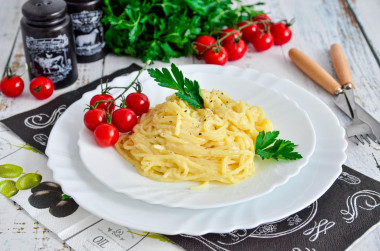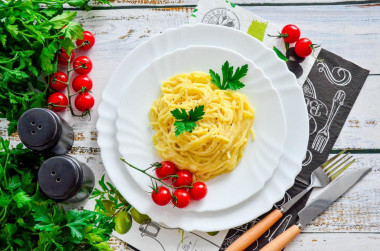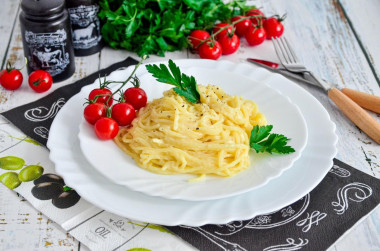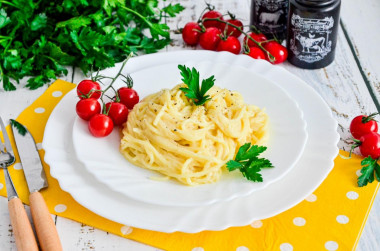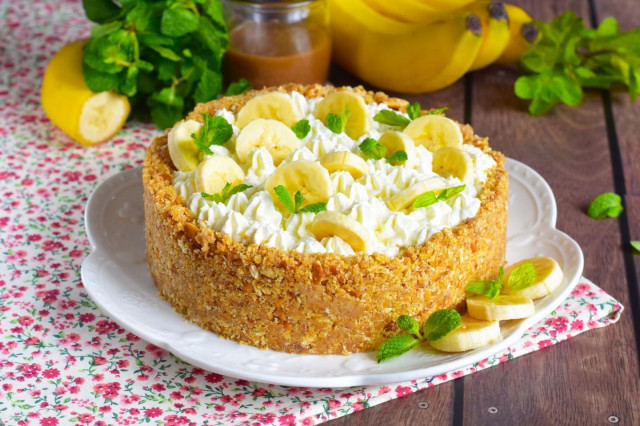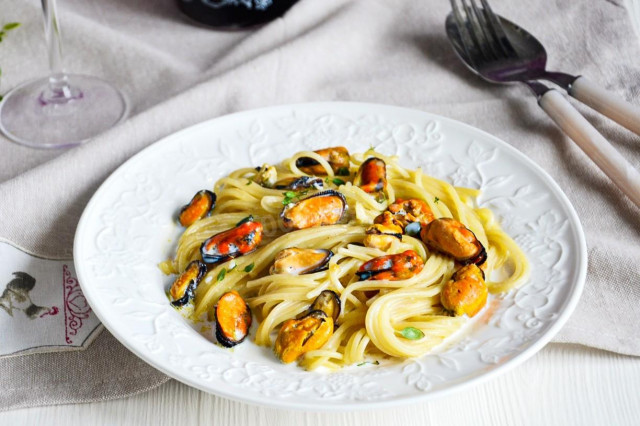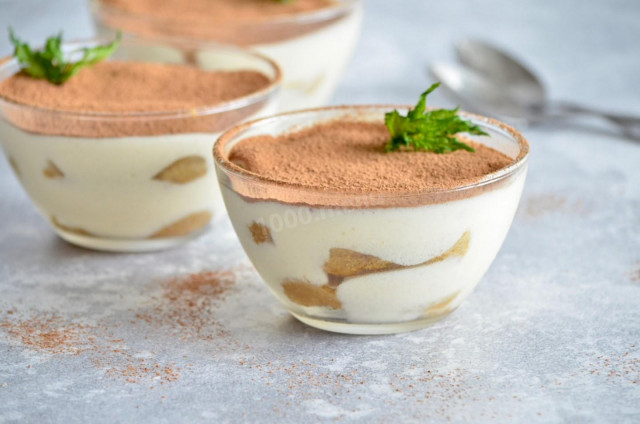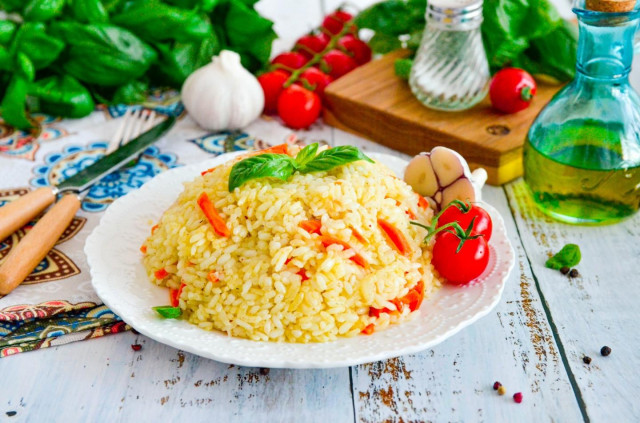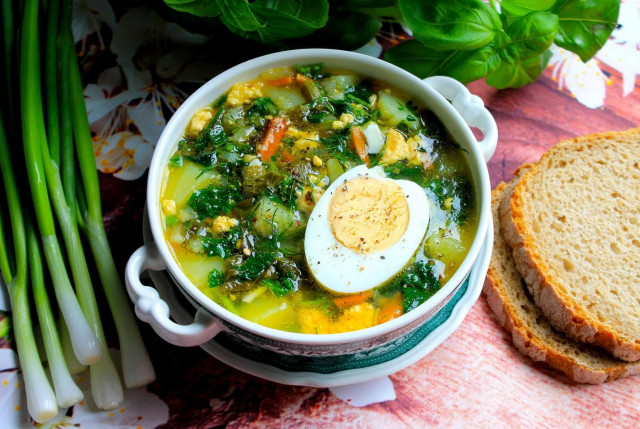Composition / ingredients
Step-by-step cooking
Step 1:
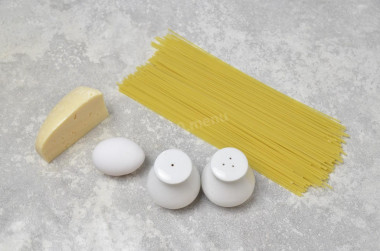
How to make macaroni with cheese and egg? Prepare the products. Pasta will fit any shape, I took spaghetti. Choose a high—quality pasta made from durum wheat - such pasta tastes better and will not boil into porridge.
Step 2:
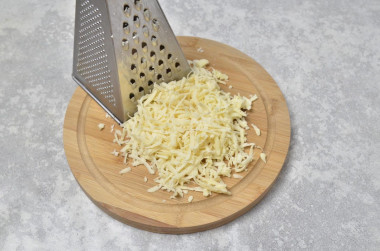
First of all, put a pan of pasta cooking water on the stove. While it boils, take care of other products. Grate the cheese on a coarse grater. Take high-quality and natural cheese, without milk fat substitutes. Solid or semi-solid is best, the main thing is that it melts well and is delicious.
Step 3:
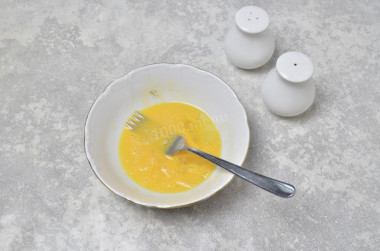
Beat the egg into a bowl. Be sure to wash the eggs before use, as even the seemingly clean shell may contain harmful bacteria. It is best to use food detergents and a brush. Lightly beat it with a fork until smooth. Add a little salt and ground black pepper. Keep in mind that the egg will then mix with cheese, which also contains salt, do not over-salt. Stir the egg again.
Step 4:
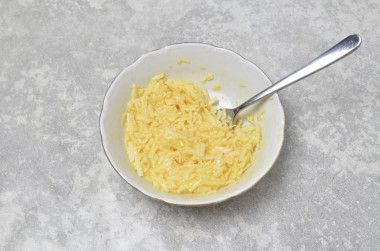
Add grated cheese to it. Mix it up.
Step 5:
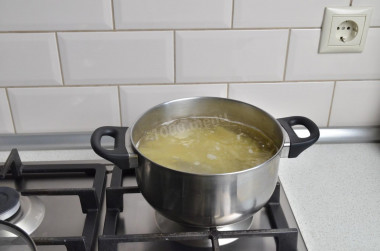
The water will boil in the meantime. Add salt to it and toss the pasta. Stir immediately so that they do not stick to the bottom. Cook the pasta over medium heat according to the instructions on the package. Stir the contents of the pan from time to time. Do not overcook the pasta, they should remain slightly firm — this pasta is both tastier and healthier.
Step 6:
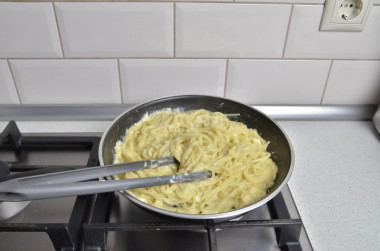
Transfer the finished pasta to a frying pan. It is better if it is non-stick coated, then the cheese will not stick to the bottom. To prevent the dish from getting dry, pour in a little water in which the pasta was cooked. Put the egg and cheese in a frying pan. Make the fire minimal, then the egg will not curdle but turn into sauce. With constant stirring, achieve complete melting of the cheese. As soon as this happens, turn off the heating.
Step 7:
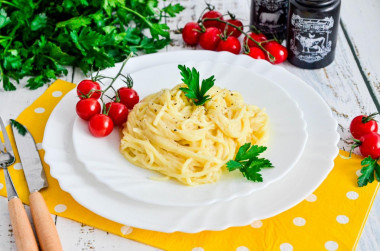
Immediately transfer the pasta to plates, sprinkle them with ground black pepper and serve. Enjoy your meal!
Very tasty pasta! It turns out to be similar to the famous carbonara, only without bacon. Cook it in enough quantity to eat it right away — it's not so good when it's warmed up.
How do I know if an egg is fresh? Break it into a separate container. First of all, there should be no unpleasant smell. The protein of fresh eggs will be transparent and clean. The yolk should not spread and will be shiny, convex, homogeneous.
How to cook pasta properly, how to cook pasta al dente, how to choose a quality product to avoid disappointment and much more, read the article "Pasta and pasta - the subtleties of choice and secrets of cooking" .
Important! An incorrectly selected frying pan can ruin even the best recipe. All the details on how to choose the perfect frying pan for different dishes read here .
Caloric content of the products possible in the composition of the dish
- Dutch cheese - 352 kcal/100g
- Swiss cheese - 335 kcal/100g
- Russian cheese - 366 kcal/100g
- Kostroma cheese - 345 kcal/100g
- Yaroslavsky cheese - 361 kcal/100g
- Altai cheese 50% fat content - 356 kcal/100g
- Soviet cheese - 400 kcal/100g
- Cheese "steppe" - 362 kcal/100g
- Cheese "uglichsky" - 347 kcal/100g
- Poshekhonsky cheese - 350 kcal/100g
- Lambert cheese - 377 kcal/100g
- Appnzeller cheese with 50% fat content - 400 kcal/100g
- Chester cheese with 50% fat content - 363 kcal/100g
- Edamer cheese with 40% fat content - 340 kcal/100g
- Cheese with mushrooms of 50% fat content - 395 kcal/100g
- Emmental cheese with 45% fat content - 420 kcal/100g
- Gouda cheese with 45% fat content - 356 kcal/100g
- Aiadeus cheese - 364 kcal/100g
- Dom blanc cheese (semi-hard) - 360 kcal/100g
- Lo spalmino cheese - 61 kcal/100g
- Cheese "etorki" (sheep, hard) - 401 kcal/100g
- White cheese - 100 kcal/100g
- Fat yellow cheese - 260 kcal/100g
- Altai cheese - 355 kcal/100g
- Kaunas cheese - 355 kcal/100g
- Latvian cheese - 316 kcal/100g
- Limburger cheese - 327 kcal/100g
- Lithuanian cheese - 250 kcal/100g
- Lake cheese - 350 kcal/100g
- Gruyere cheese - 396 kcal/100g
- Ground black pepper - 255 kcal/100g
- Salt - 0 kcal/100g
- Chicken egg - 80 kcal/100g


